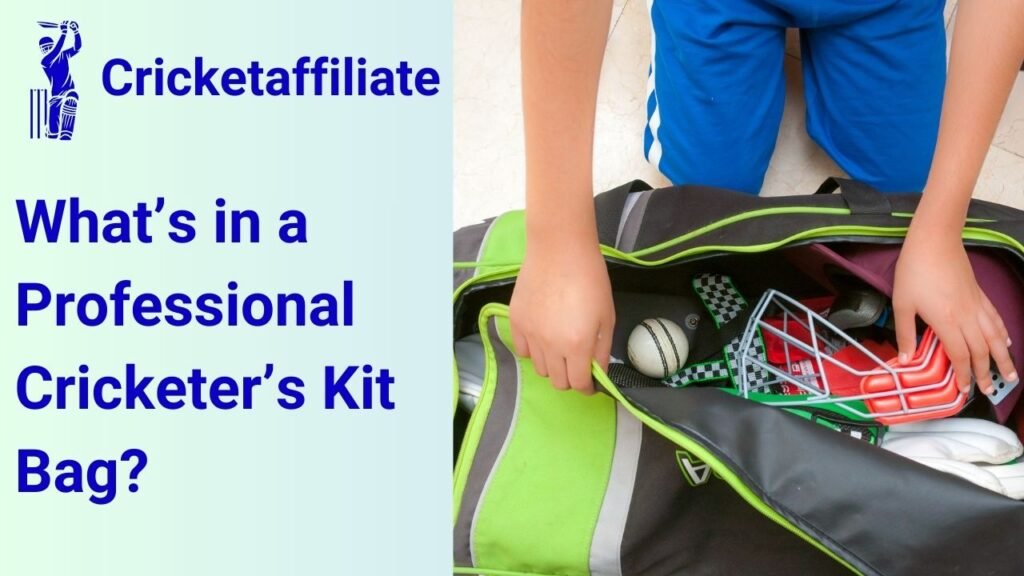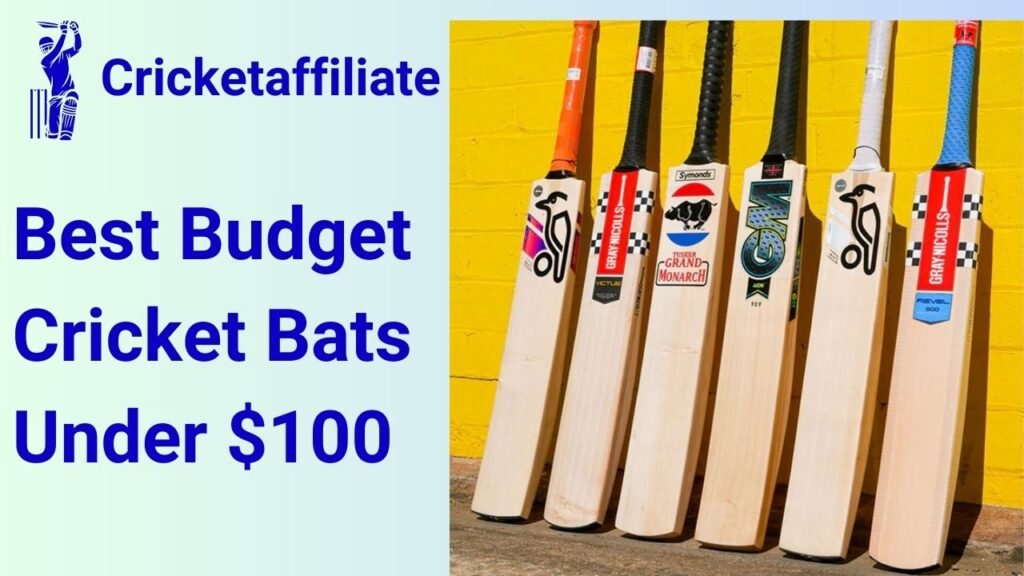Cricket is not just a game; it’s a passion that demands precision, skill, and preparation. One of the most intriguing aspects of a professional cricketer’s routine is their kit bag. This isn’t just a container for equipment; it’s a treasure trove of essentials that ensure peak performance on the field. Whether you’re an aspiring cricketer or simply curious about what professionals carry, understanding the contents of a cricketer’s kit bag reveals how meticulous preparation contributes to success.
In this article, we’ll dive deep into the topic of What’s in a Professional Cricketer’s Kit Bag? We’ll explore every item, its purpose, and why it’s indispensable for a cricketer. Let’s unravel the mysteries of the bag that holds the tools for greatness.
The Importance of a Well-Stocked Kit Bag
A professional cricketer’s kit bag is more than just equipment storage; it’s a symbol of readiness and discipline. Each item in the bag is carefully selected, ensuring the player is prepared for any scenario. Cricket is a demanding sport, and even minor oversights can affect performance.
A well-organized kit bag enhances confidence, saves time during practice or matches, and prevents unnecessary stress. For professionals, it’s not just about carrying gear; it’s about carrying the right gear in the right condition. This attention to detail can be the difference between an average game and an extraordinary performance.
The Essentials Inside a Cricketer’s Kit Bag
Let’s answer the burning question: What’s in a Professional Cricketer’s Kit Bag? Here’s a detailed breakdown:
1. Cricket Bat
The cricket bat is the heart of any cricketer’s kit bag. Professionals often carry multiple bats to ensure they have a backup in case of damage. Each bat is chosen carefully, considering weight, handle type, and sweet spot.
- Why it’s essential: A well-suited bat enhances shot precision and power.
- Features to look for: Willow quality (English or Kashmir), grip texture, and balance.
2. Batting Pads
Batting pads protect the legs from fast deliveries. Modern pads are lightweight yet durable, designed to provide maximum safety without hindering movement.
- Material: High-density foam and leather.
- Pro Tip: Always choose pads that fit snugly but allow free movement.
3. Gloves
Batting and wicket-keeping gloves are critical for protection and performance. Batting gloves cushion the hands from ball impact, while wicket-keeping gloves enhance grip for catches.
- Types: Batting gloves (split-finger or sausage-style) and wicket-keeping gloves.
- Maintenance: Keep them dry to prevent odor and maintain grip quality.
4. Helmet with Grill
Safety is paramount, and a cricket helmet with a grill ensures head and face protection against fast deliveries.
- Key Features: Adjustable straps, impact-resistant shell, and ventilation.
- Why professionals trust them: Helmets reduce the risk of injuries, boosting player confidence.
5. Cricket Shoes
Proper footwear is vital for grip, agility, and comfort. Cricket shoes are designed with spikes or rubber soles, depending on the playing surface.
- Considerations: Ankle support, sole durability, and fit.
- Pro Insight: Many players carry two pairs—one for practice and another for matches.
6. Protective Gear
Cricketers carry a range of protective equipment to safeguard vulnerable areas. These include:
- Thigh Guards: Protects the upper leg.
- Abdominal Guard (Box): Shields sensitive areas.
- Arm Guards: Prevents injuries to the arms from rising deliveries.
- Chest Guards: Optional but essential for extra safety against fast bowlers.
7. Cricket Balls
While balls are typically provided during matches, many professionals carry practice balls. These could include new balls, used balls, and even specialty balls like swing or seam trainers.
8. Training Essentials
A professional cricketer’s kit bag isn’t just about match day; it also includes items for training:
- Cones and markers.
- Resistance bands for strength training.
- A skipping rope for warm-ups.
- A notebook or performance journal to track progress.
9. Spare Clothing and Accessories
Unexpected weather changes or long matches make spare clothing a necessity. These include:
- Extra jerseys, socks, and trousers.
- Sweatbands and towels.
- Caps or hats for sun protection.
10. Maintenance Tools
To keep their gear in top condition, cricketers carry maintenance tools like:
- Bat grips and tape.
- Oil for bat care.
- Shoe spikes and a wrench.
11. Hydration and Nutrition
Staying hydrated and energized is crucial. Most players carry water bottles, energy drinks, and light snacks like protein bars.
A Quick Overview: What’s in a Professional Cricketer’s Kit Bag?
Here’s a summarized table for clarity:
| Item | Purpose |
|---|---|
| Cricket Bat | For scoring runs. |
| Batting Pads | Protect legs from fast deliveries. |
| Gloves | Batting and wicket-keeping protection. |
| Helmet | Head and face safety. |
| Cricket Shoes | Optimal grip and comfort. |
| Protective Gear | Shields sensitive body parts. |
| Cricket Balls | Practice and performance. |
| Training Essentials | Tools for fitness and skill improvement. |
| Spare Clothing | Preparedness for long matches. |
| Maintenance Tools | Gear upkeep and repairs. |
| Hydration & Nutrition | Sustains energy during play. |
How to Choose the Right Kit Bag
Every cricketer needs a kit bag tailored to their needs. Here are some factors to consider:
- Size: Ensure it accommodates all your gear.
- Compartments: Look for separate sections for bats, shoes, and protective gear.
- Durability: Opt for high-quality materials that withstand wear and tear.
- Portability: Bags with wheels or padded straps offer convenience.
FAQs About What’s in a Professional Cricketer’s Kit Bag?
1. How many bats do professional cricketers carry?
Most professionals carry 2–4 bats to ensure they have backups for varying conditions or in case of damage.
2. Why is protective gear important in cricket?
Protective gear minimizes the risk of injuries from high-speed balls or accidental collisions, ensuring player safety.
3. What type of shoes should a cricketer use?
Cricketers should choose spiked shoes for turf pitches and rubber-soled shoes for concrete or matting surfaces.
4. Do professionals maintain their own equipment?
Yes, many professionals carry tools for bat maintenance, shoe repairs, and general upkeep of their gear.
5. What are some additional items cricketers carry?
Items like sunscreen, wristbands, and a personal diary for strategies or notes are common additions.
6. How often should equipment be replaced?
It depends on usage. Bats may last a season or two, while gloves and pads might need replacing after extended wear.
7. Can beginners use professional-grade gear?
Beginners can use professional-grade gear, but it’s essential to choose items suited to their skill level and comfort.
8. How do cricketers prepare their bats?
They often oil and knock in their bats to enhance durability and performance.
Conclusion
A professional cricketer’s kit bag is a meticulously curated collection of tools and essentials that ensure they’re prepared for any challenge on the field. By understanding What’s in a Professional Cricketer’s Kit Bag, players and enthusiasts alike can appreciate the importance of preparation in this sport.
For those aspiring to elevate their game, investing in the right gear and maintaining it properly is key. Your kit bag isn’t just a carrier—it’s your companion on the journey to cricketing success. So, pack it wisely and step onto the field with confidence!



